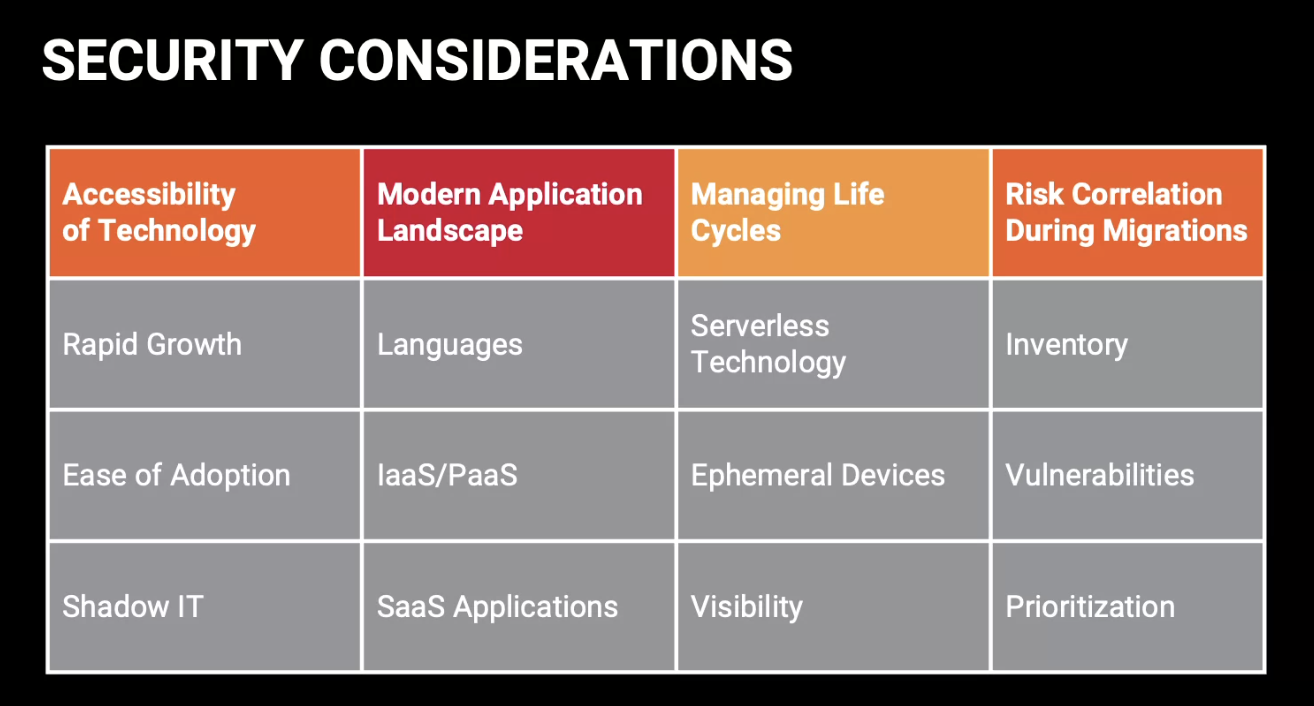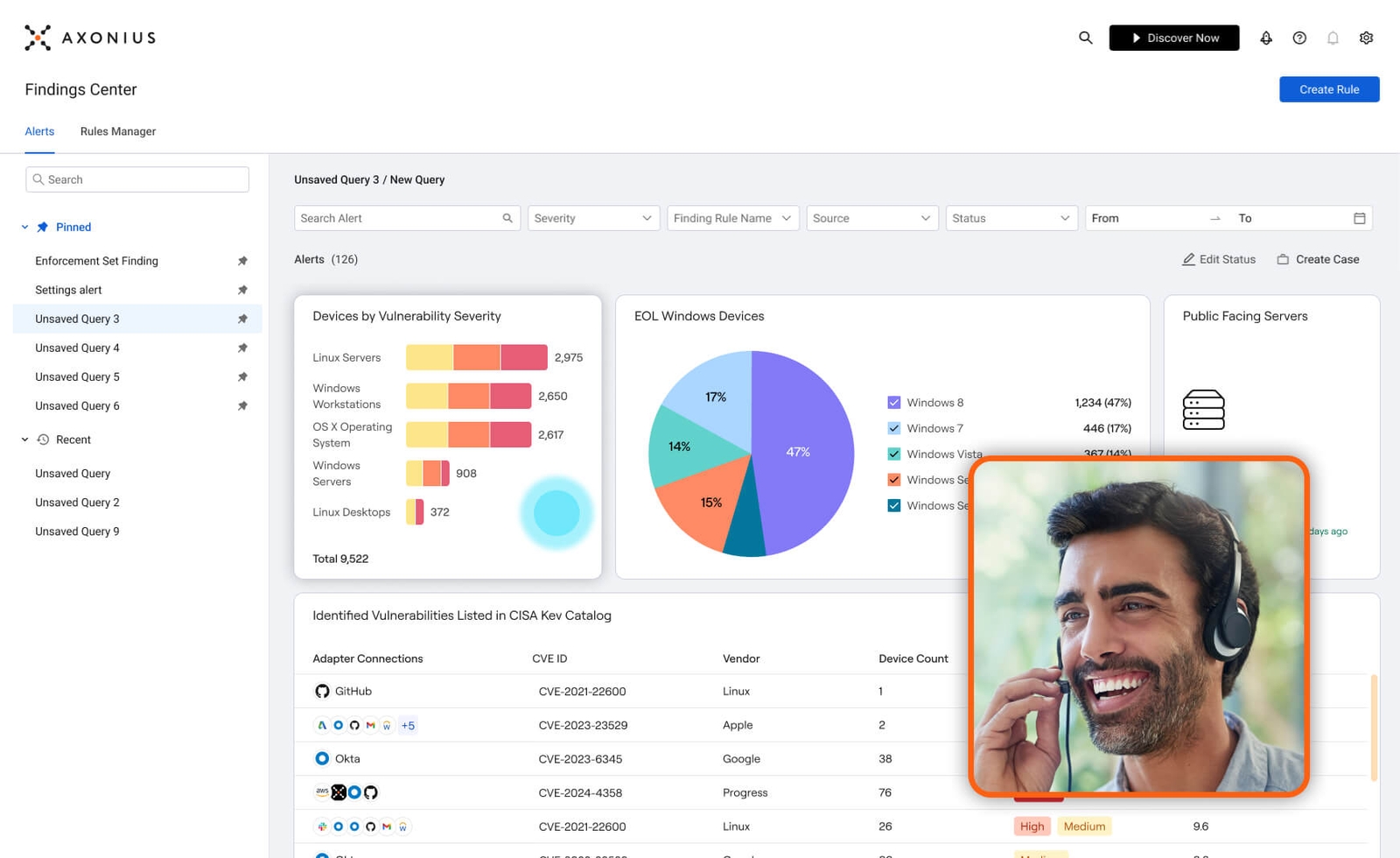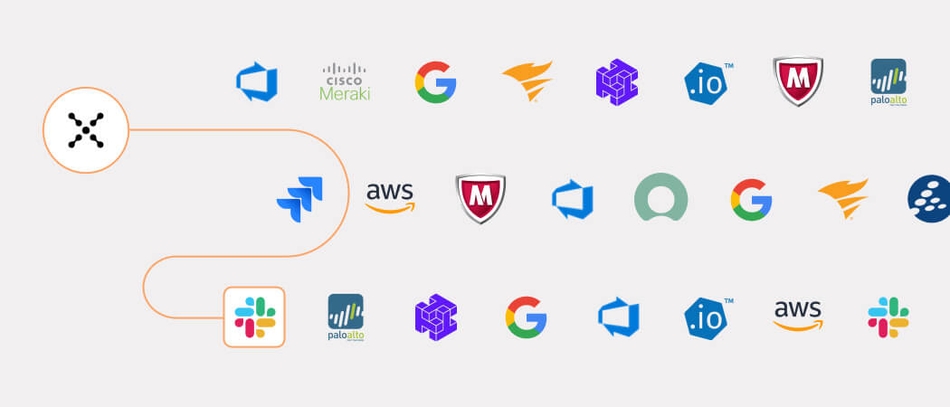Four Security Considerations for Cloud Modernization in 2024
Alexandra Lietzke

As more organizations embrace cloud modernization in 2024, IT and security leaders face a unique challenge. Achieving migration in one easy step is something most organizations haven’t fully cracked the code on yet. That’s why most companies migrate to the cloud in multiple phases. However, remaining secure and avoiding misconfigurations and vulnerabilities while completing these multi-step migrations introduces a new level of complexity that some companies still struggle with navigating.
In a recent webinar we hosted in collaboration with AWS and Wiz, "Exploring Cloud Modernization in 2024: Top Security Considerations," we discussed how IT and security leaders can gain better asset context and vulnerability prioritization to reduce their attack surface, strengthen their security posture, and efficiently manage hybrid environments in 2024. Here’s a recap of that conversation.
Our top takeaways
Cloud Migration is a Complex Process, Axonius Makes it Simple
Modern environments are hard to navigate, and the way you approach migration can make or break your shift to the cloud. These environments include many different tools in systems spanning different deployment models, and in some cases, even different decades, depending on your tech stack. For AWS customers, this often results in moving to the cloud in multiple phases, multiple ways. By breaking up the journey to the cloud into multiple steps, customers see additional value, increased agility, and a faster time to market.
“When we see customers modernizing or moving to the cloud, they do that in multiple phases, multiple ways. They could be doing a lift and shift to the cloud or they could be weigh-factoring existing applications to run them on a modern cloud native tech stack. They could be adopting containers, moving to a microservice based framework, or moving to serverless technologies. These choices give customers a lot of value, increased agility and faster time to market.” – Siva Sadhu, AWS
Disorganized Cloud Migration Comes with Immense Risk
There are many layers to prioritizing and understanding risk as you shift to the cloud. The first layer is gaining visibility into your cloud environment. From there, you can take a deeper dive into different risk factors and vulnerabilities. Finally, by using a solution like the Axonius Platform, you can correlate the most critical risks that exist in your cloud environment. Gaining more information and context helps you know what risks to prioritize, reducing unnecessary noise.
“At AWS, we talk about security being a shared responsibility. AWS is responsible for the infrastructure, but the customer is responsible for the applications. And that's where we see customers increasingly using solutions from ISVs like Wiz or Axonius to improve security posture. This helps them move to a modern tech stack and a cloud native solution faster, safer, and securely.” – Siva Sadhu, AWS
Build a Strong Culture of Security with Axonius
When organizations create a strong culture of cybersecurity where digital safety is the responsibility of every employee, a stronger defense against threats is woven into the fabric of the organization. This is even more important during times of organizational vulnerability, like a migration to the cloud. As you look to modernize your environments, gaining organizational buy-in around the culture of security and sharing how to work securely is a large part of promoting security, both during and after cloud migration.
“People need to know and agree that operating securely is a part of their job. Whether that's me not writing down my password and putting it on a sticky note underneath my keyboard, or whether that's me not just grabbing production data and throwing it into a less secure test environment without guardrails. There has to be an organizational agreement that everyone is going to act securely, which then helps me build out a set of policies and controls.” – Mike Reed, AWS
Four security considerations
When we consider modern environments, there are many different security considerations. Organizations need to ask themselves questions like, “How do we secure a physical device?” and “How do we make sure we’re using software that doesn't have so many different vulnerabilities associated with it?” Here are four things to consider that will help you stay secure and increase visibility as you shift to the cloud.

Accessibility of Technology
Having a strong preventative security plan in place is key to building a modern cloud infrastructure. By proactively gaining visibility into your environment and setting up the right guardrails, you already have a clear understanding of what’s there. On top of that, it’s important to build a strong culture of security, have a strong understanding of who owns what, and to remain agile – giving you the tools to tackle challenges effectively when they arise during the migration process. “Using Wiz and Axonius in tandem gives you the right guardrails so you can use the tools you need, with full visibility into your environment and how things are configured and used.” – Annam Iyer, Wiz
Modern Application Landscape
Customers are looking to experiment and foster a culture of innovation – and are strategically picking technology that increases visibility into potential vulnerabilities. According to AWS’s Siva Sadhu, we’re seeing that customers are now adopting newer programming languages, tools, and paradigms when migrating, refactoring, or building new applications in the cloud. To close the gaps, customers are picking tools and creating processes to ensure that these new technologies are secure, which in turn creates holistic visibility into the vulnerabilities in multi-solution environments. “Cloud has really revolutionized how businesses like us conduct ourselves and use IT to our advantage. Security needs to enable businesses and their needs, and shouldn't hamper innovation,” says Wiz’s Annam Iyer.
Managing Life Cycles
As organizations manage life cycles, the biggest security challenge isn’t just obtaining data at the platform, application, or network level. The real challenge is having the threat intelligence and operational capabilities to see what in your environment is suspicious in the first place. Before building an application or migrating an application to AWS, you should know what level of operating security you need – which can be achieved by understanding the deeper layers of potential compromises, assessing the blast radius, and determining the exposure of data. According to Mike Reed, “The first thing you should look at in terms of managing the lifecycle of your infrastructure and applications is how much security, tools, and partners are needed. It goes back to that shared responsibility model.”
Risk Correlation During Migrations
When it comes to correlating risk, solutions like Axonius’s Cloud Asset Compliance are helpful because it helps build a full picture of a system and all of the different data sets that come with it. Taking an inventory and gaining one single view of what you already have integrates additional layers of security into the migration process. Documenting architectures and sharing this information is another important step that helps engage everyone across the organization and makes everyone a security practitioner. By increasing visibility into the risk your environment holds, this helps bridge the gap between security and development functions.
What's next for 2024?
Organizations are increasingly implementing cloud modernization projects, and in 2024, this will only continue at a faster pace. As more organizations move to hybrid environments, how can they continue to explore cloud modernization strategies without hindering efficiency and security?
Learn how IT and security leaders can gain better asset context and vulnerability prioritization to reduce their attack surface, strengthen their security posture, and efficiently manage hybrid environments in 2024. Watch the webinar replay by clicking the banner below where Axonius, AWS, and Wiz offer guidance into managing and navigating expanding IT environments and coinciding complexities.
Categories
- Cloud and SaaS Security

See Axonius in action
Discover what’s achievable with a product demo, or talk to an Axonius representative.





